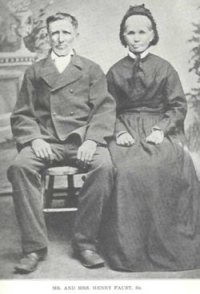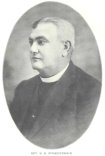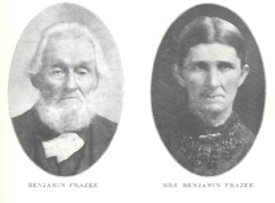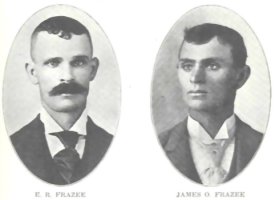Christian Fisher, a farmer residing on section 21, Utica township, is one of the highly esteemed residents of Chickasaw county, everywhere spoken of in terms of warm regard. He was born in Winneshiek county, Iowa, August 4, 1853, and is a son of Christian F. and Elizabeth K. (Schenpp) Fisher, who were natives of Wurtemberg, Germany, where they were reared and married. They came to the United States in 1851 and traveled across the country, settling at Fort Atkinson in Winneshiek county, where they cast in their lot among its first residents. Pioneer conditions everywhere existed and the family met the hardships and privations incident to the establishment of a home upon the frontier. The father was a blacksmith by trade and in addition to his work at the forge followed farming, becoming owner of one hundred and twenty acres of land. He passed away at Fort Atkinson about 1884 and for a considerable period was survived by his wife, who died in 1900, at the advanced age of eighty-eight years.
Christian Fisher was reared on the old homestead and acquired a district school education. At the early age of twenty-one years he began farming for himself and for three years cultivated rented land at Little Turkey in Utica township. He then went to Wright county, Iowa, where he purchased a farm of eighty acres, remaining thereon for four years. When he sold that property he removed to Mower county, Minnesota, and bought eighty acres of land, which he further developed and improved for nine years, converting it into richly productive fields. He then sold his farm in that state and came to Chickasaw county, making investment in one hundred and sixty-five acres of land in Utica township, constituting a part of his present home place. In subsequent years he has added continuously to his farm, extending its boundaries from time to time until his holdings now aggregate four hundred acres in Chickasaw county. This is largely a tract of very fertile land and his energy and industry have made it a highly cultivated tract, producing very substantial harvests annually.
In February, 1875, Mr. Fisher was united in marriage to Miss Emma Leuenberger, a native of Ohio. Her parents emigrated to the United States from Germany and first took up their abode in Ohio, while in 1855 they established their home in Winneshiek county, Iowa. Mr. and Mrs. Fisher have become the parents of eight children, namely: Anna M., who is the wife of L. G. Cooney, of Stapleton township, Chickasaw county; Jerome H. and Louis F., who are engaged in farming in Utica township; Minnie E., who is the wife of William C. Kelley, of Jacksonville township, Chickasaw county; Joseph C., who follows farming in Utica township; and Grace E., Leo E. and Clarence, all at home. The last named served for one year and two days with the United States army in France as a member of Company K, One Hundred and Fiftieth Infantry, Thirty-fifth Division.
Mr. Fisher is an earnest republican in his political views and is recognized as one of the local party leaders. He was a candidate for the office of county supervisor in 1913, and while he made no canvass of his district, he was defeated by only two votes, his large support indicating his personal popularity and the confidence reposed in him by his fellow townsmen. Mr. Fisher is a member of the Modern Woodmen of America and he belongs to the Congregational church, while Mrs. Fisher is of the Catholic faith. His position as a substantial and successful farmer of Chickasaw county is an enviable one. His life has been characterized by industry, by progressiveness and straightforward dealing and his prosperity is the direct reward of his earnest and persistent labor.
Source: History of Chickasaw and Howard Co (1919), Vol II, pages 299 - 300 |




